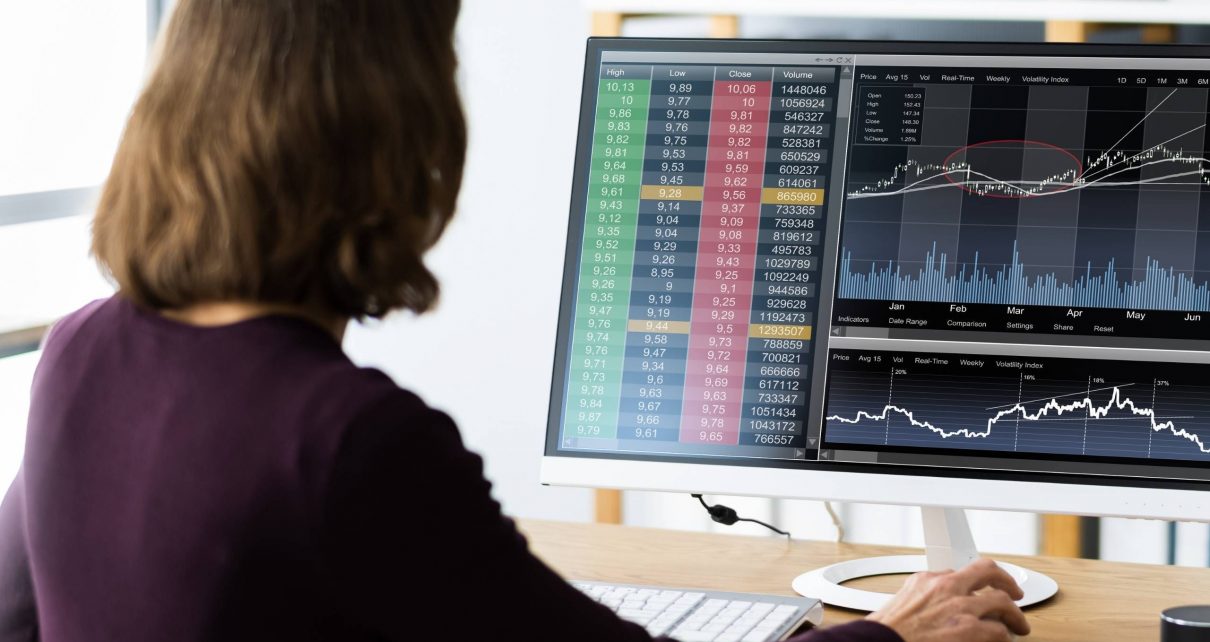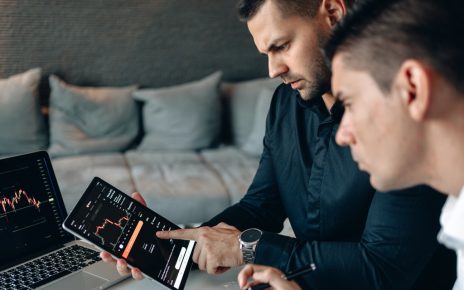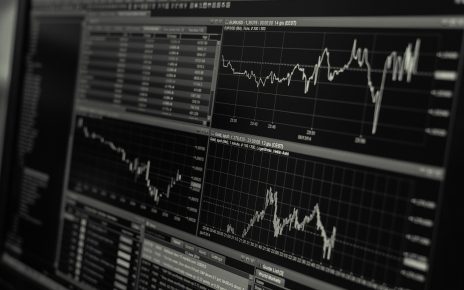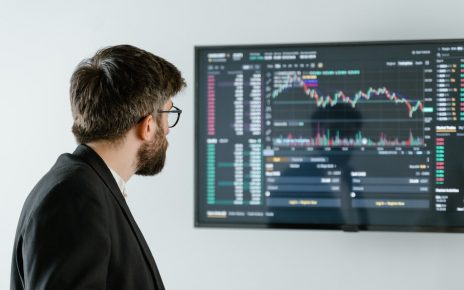Day trading futures is one of the most popular ways to invest money in the financial markets. Though it is risky, you can potentially win huge profits and have a steady side job if you do it properly.
As Benjamin Franklin once said, “an investment in knowledge pays the best interest.” Also, legendary investor Warren Buffett confirmed it when he said that “successful investment takes time, discipline and patience.”
So, what do you need to become not only an investor but a successful day trader? Knowledge, practice, and self-control. However, let’s check what day trading is?
This article will talk about everything you should know before starting day trading futures markets. Also, what are the best futures trading strategies, rules, tips, and tricks?
Are you ready to become a day trader? Let’s begin.
What is day trading?
Day trading is the art of buying and selling financial assets on the same day so that you should close positions before the end of the day. If you do it properly, it can represent huge profits, but at the same time, it is risky as traders will manage high volatility levels in small time frames.
When it comes to talking about day trading investment instruments, it is the strategy of opening positions that last minutes or hours, but, theoretically, it cannot go overnight.
Day traders should comply with specific rules, like having enough capital to place positions. They should also research and understand the market, identify strategies they feel comfortable with, and have the discipline to develop their trading plan.
If you are a United States citizen, you should comply with the FINRA requirements described as the “pattern day trader.” According to the Financial Industry Regulatory Authority, a day trader makes at least four short-term intraday positions in five business days, and this activity represents more than six percent of all the trader’s activity.
FINRA also says you should have a 25,000 minimum balance in your account. Read more about the “pattern day trader.” It applies to regular assets. However, those obligations are not in place when trading futures.
Finally, successful day traders take their role as a full-time job, not like a hobby to spend some hours. You can also have a routine where you have specific hours to trade, but it is recommendable to have fixed hours per day to understand the market conditions you are dealing with on a daily basis.
Why invest in day trading futures
According to the CME Group, “a futures trader is not required to meet minimum account sizes.” As a day trader in futures, you can open positions as frequently as you want as far as you maintain minimum margin requirements.
Besides, day trading futures offer no short sale restrictions since you don’t need to find a dealing partner as it happens in other markets such as equities. Margins in futures are also more accessible, and you will have the ability to trade more value with the same amount of money than a regular day trading account.
Pros and advantages of day trading futures
Minimum costs: The trading of futures doesn’t request a significant amount of money to open a new account. Most people open their first futures portfolio with 5,000 dollars, even less. Obviously, the more money your portfolio has, the more resources you will be able to manage.
Low margins: While margins are something to consider in other markets, in futures, they are usually around 3-9 percent of the full contract value so that you can adapt yourself to your capacity and trade with small amounts of money used as margin.
You trade the price of the underlying asset: With futures, you don’t follow the cost of the option or contract, but the price movement between the opening and closing prices of your position.
FINRA “pattern day trading” rules do not apply: As mentioned earlier, you don’t have to follow the FINRA requirements for day trading futures. The only rule you should follow is the designated margin and, of course, being responsible with your trades.
Cons and disadvantages of day trading futures
Overtrading: It is easy to trade futures. Furthermore, it is also easy to fall into overtrading when you have a peak of confidence or are trading to recover a loss. At that moment, the possibilities to incur over fees and extended drawbacks are bigger.
Risks: As you may know, day trading futures can represent significant profits, but it also entails huge risks. That’s why you should understand the game before playing it. Most people lose money when day trading due to a lack of preparation and discipline to identify and manage risks. Day to day education and practice is mandatory in day trading.
Taxes: According to taxation rules in more countries, short-term gains are subject to more significant levels and amounts than the ones resulted from long-term investments. So, when day trading, and therefore day trading futures, you will have to face higher taxes.
Do you want to try day trading futures? Discover your options and get funded in just one step!
Top markets for day trading futures

Several futures markets are focused on different needs and types of traders. Among the most popular markets to day trade futures are the E-mini S&P 500, the Dow Futures in stocks, the Eurodollar and Japanese Yen in currencies, the 10-year Treasury Note in bonds, and the crude oil WTI for oil. Let’s see.
What assets can you trade in a Funded Account? Check it out!
E-Mini S&P 500: The S&P 500 E-mini futures contract is an electronically traded asset on the Chicago Mercantile Exchange, also known as the CME. It represents one-fifth of the value of the standard S&P 500 futures contract.
Eurodollar: The Eurodollar futures contract is a LIBOR-based derivative representing the offered rate for a 3-month 1 million USD deposit in a bank outside the United States, at foreign banks or at the overseas branches of American banks, and it is issued by a non-American bank or corporation situated outside the U.S.
It is traded on the CME floor and electronically. It provides more flexible yields as it is subject to fewer regulatory restrictions. The Federal Reserve Bank does not have any jurisdiction over the bonds that are issued and traded outside the U.S.
10-Year Treasury Note: The 10-year Treasury note is the benchmark of debt obligations in the United States. It has a maturity of 10 years upon the initial issuance and pays interest every six months. It is used as a liquid and efficient tool for hedging interest rate risks.
Crude Oil WTI: The NYMEX WTI Crude Oil futures is the most liquid crude oil contract in the market. Being the world’s most actively traded commodity it is considered as a market benchmark to hedge against volatile energy price moves.
All futures markets and instruments have different conditions and answers to several factors. You should study each one separately before trading futures on a daily basis. In the same framework, every market requires its own trading plan and techniques.
Top day futures trading strategies
Day trading futures markets offer several opportunities every session. However, to take advantage of those market conditions, it is good to master trading strategies that fit intraday moves.
That being said, remember that every market is different, so you are. Find the strategy to fulfill all your trading requirements and expectations. Learn about it and practice in a demo account first. Then, go live.
Try the OneUp Trader demo account and get ready to be evaluated in just one step!
Scalping: As one of the most popular strategies for short term timeframes, scalping involves selling and buying assets in brief periods of time. It tries to catch small imbalances, pullbacks, or bounces in bigger trends. It aims to profit from small price changes and works on quantity instead of the quality of positions.
News Trading: As a trader, you would like to follow what’s going on in the market, but also in terms of political and economic events. Usually, a trader makes investment decisions based on the outcome of fundamental developments such as political developments, job reports, or natural disasters.
If the news is negative to the asset, the trader usually sells the instrument to close it later at a lower price as he speculated that the asset’s cost would go down. In the case the news is positive for the instrument, you would buy it under the assumption that the price will go up.
Daily Pivots: Daily pivots are levels calculated based on the high, low, and close of the previous trading session. Pivot points work well in today’s electronic and highly liquid markets, even if they were originally created by floor traders. It looks to identify entry and exit points in intraday positions, and it uses volatility as the gas to produce gains. When trading pivot points, you buy at the low of the day and sell at the high of the day, and vice-versa.
Are day traders a good idea for me when trading futures?
The million-dollar question and the real answer resides in you. There are significant pros and cons when talking about day trading futures, but what really matters is your personal experience with these kinds of investment instruments.
Indeed, day trading offers substantial potential gains but also involves significant risks. Think that investors’ past performance is not indicative of futures gains and that day trade is not suitable for all investors. However, futures contracts can minimize that if done correctly.
So, what’s next from here? Start learning the basics of futures and day trading, try strategies to identify your best trading route map, and determine the best broker for your money. Having a trading partner in a reliable and trustable trading platform is the cornerstone for all successful day traders.
Finally, as a day trader, take education seriously as the markets evolve every day, so you should do too. Learn new tricks and tips and always practice in your demo account before going live with a new feature.





